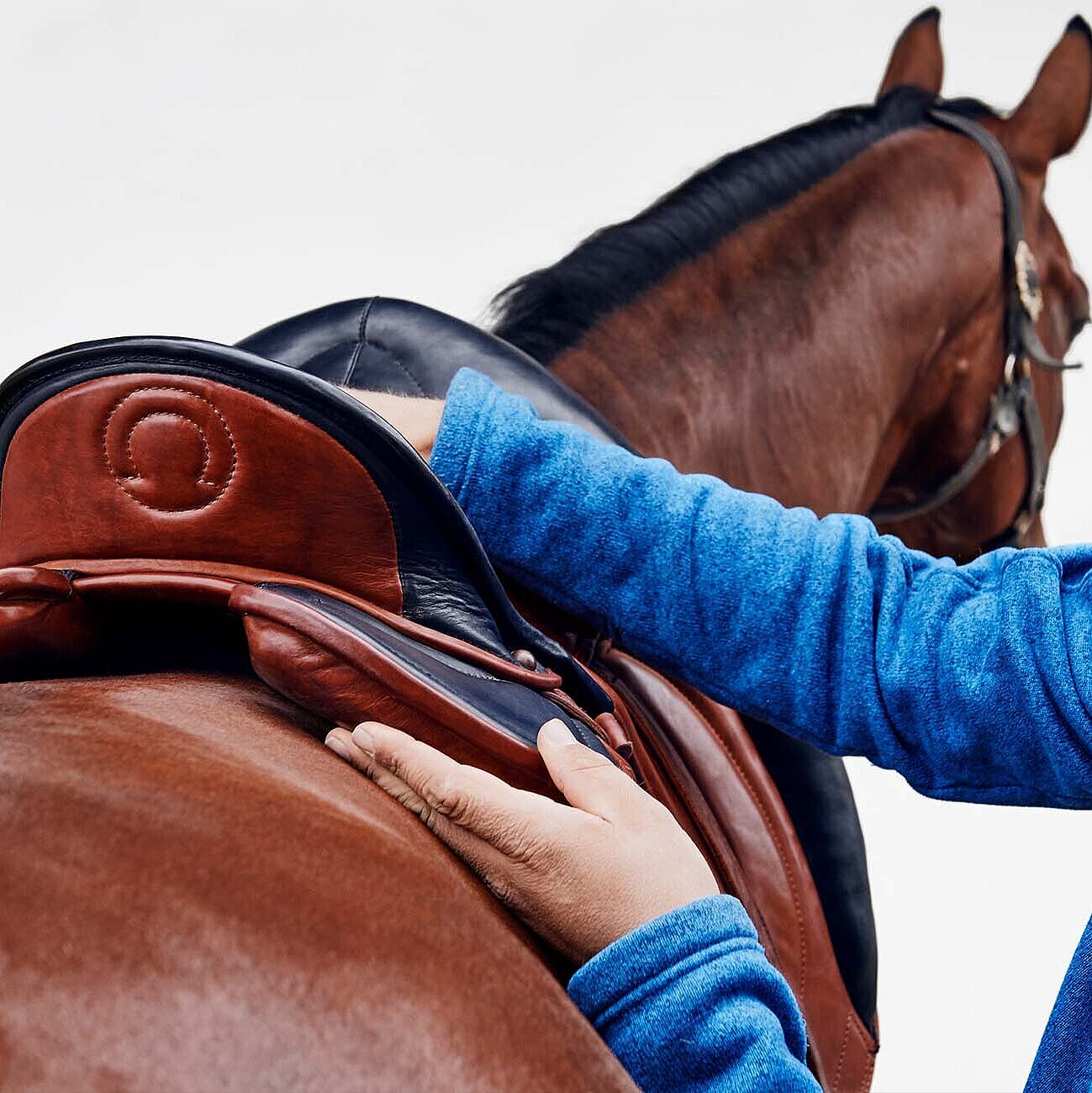Large saddle contact surface
Basically, there is widespread agreement on the correct fit of a saddle that the contact surface of the saddle should lie evenly on the horse's back and thus provide an even distribution of pressure on the horse's back. A large contact surface alone does not make a saddle suitable.
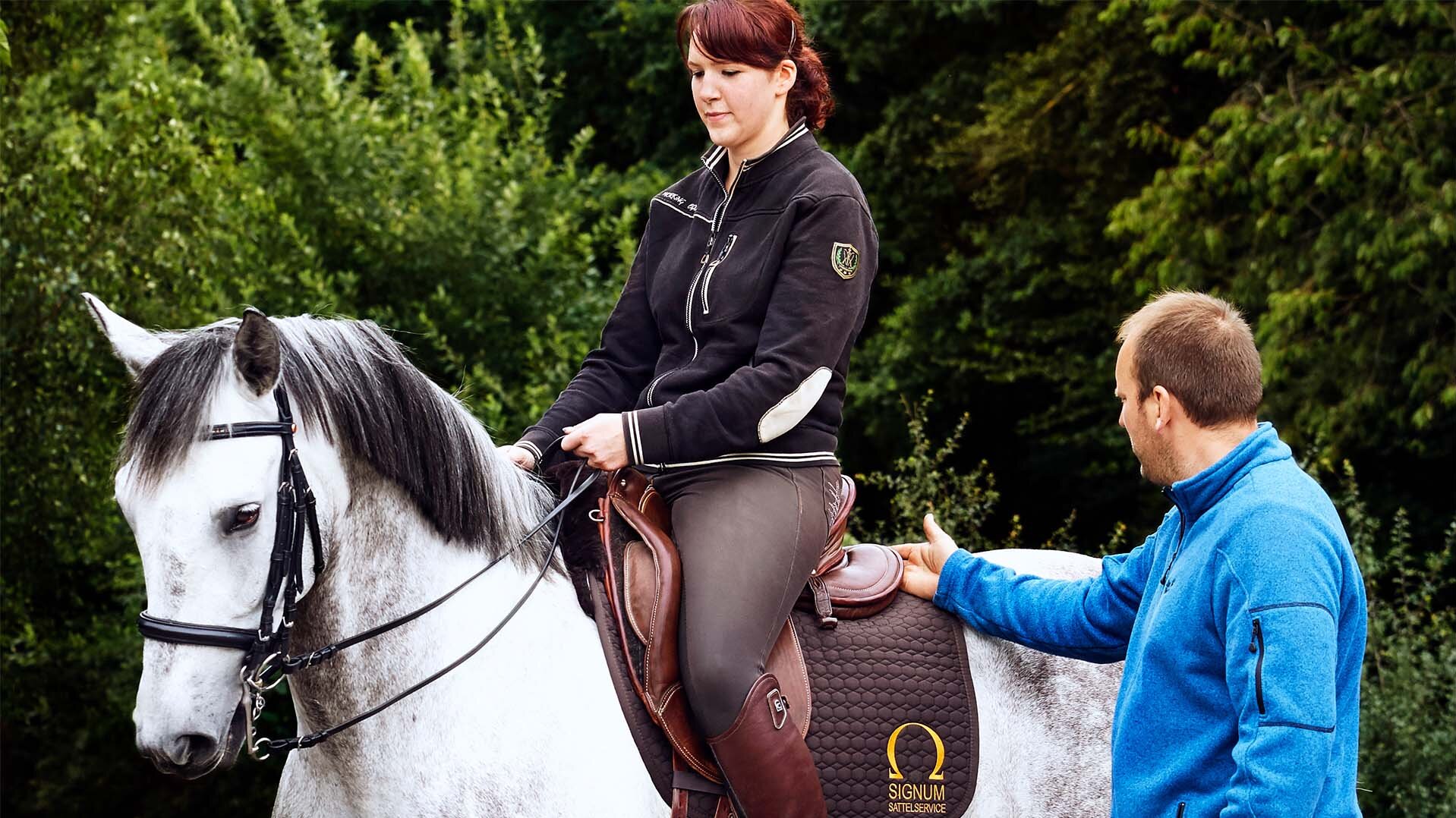
In order for the advantages of a large contact surface to be realised in the truest sense of the word, the saddle and its panels must lie evenly on the horse's back and be adapted to the rider's seat size and the horse's anatomy.
The saddle fit challenge
This makes the large contact surface a challenge in terms of fit. The saddle tree and the saddle panels should be specially built or customised for the horse so that they optimally reflect the shape of the horse's back. This is the only way to take into account the curve of the horse's back, the required shoulder freedom, the width of the gullet and the angle over the ribcage.
All these dimensions can be altered in our OMEGA custom-made saddles so that the saddle can be adapted to changes in the horse's back over time.
Characteristics of a good saddle fit
In order for a saddle with a load-bearing, large contact surface to distribute the pressure evenly and gently on the horse's back, a number of fit criteria must be met. Often greatly neglected is the angulation of the wide panels at the back of the horse's back above the ribcage!
- The (adjustable) gullet plate is used to adjust the angle of the contact surface in the front area/the area over the shoulder to the horse
- The panels themselves should be shaped according to the anatomical needs of the horse in order to provide sufficient shoulder freedom
- The saddle tree determines the curve of the contact surface over the back line
- The angle of the contact surface at the rear of the saddle must be adapted to the curvature of the horse's ribcage!
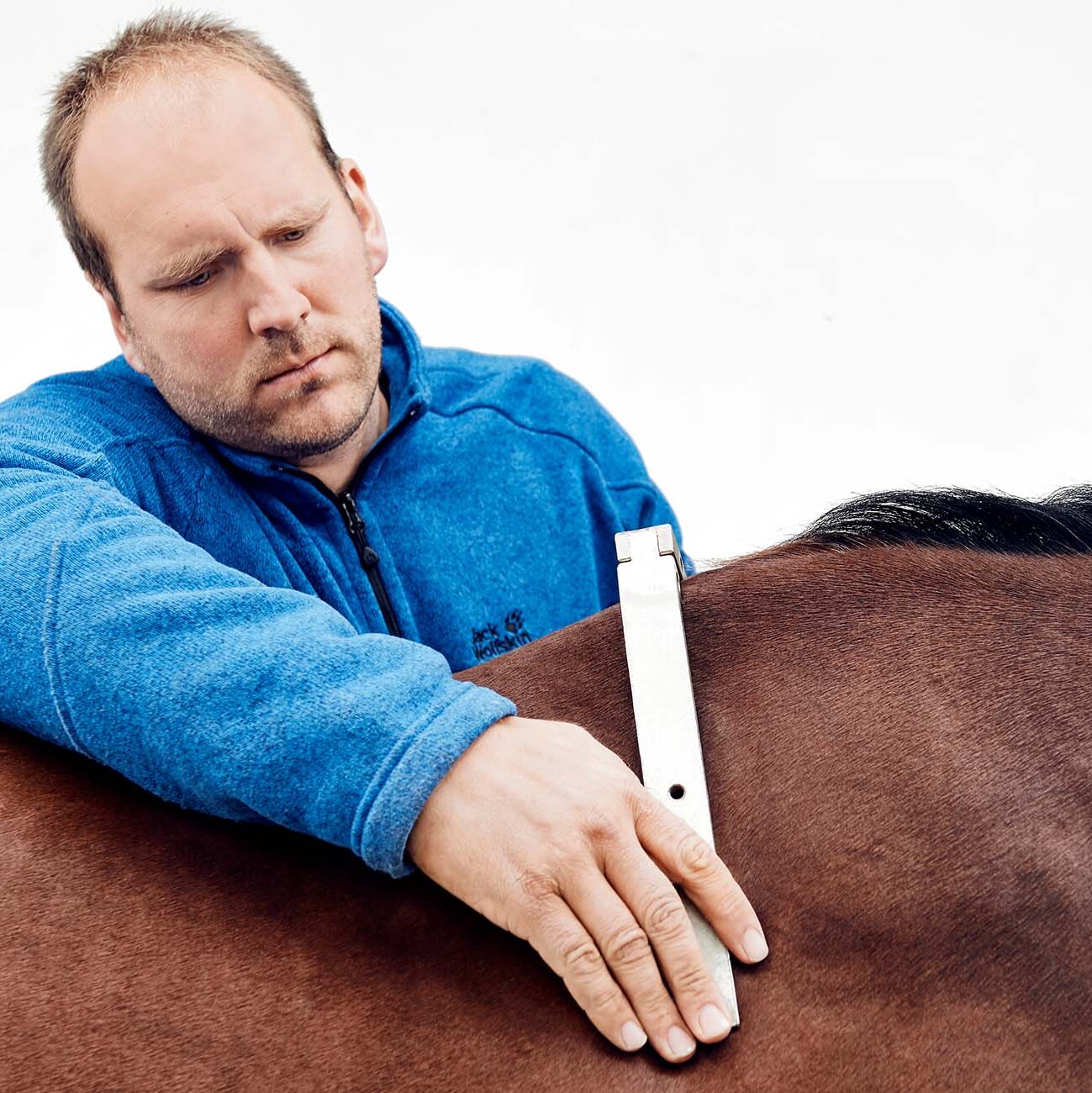
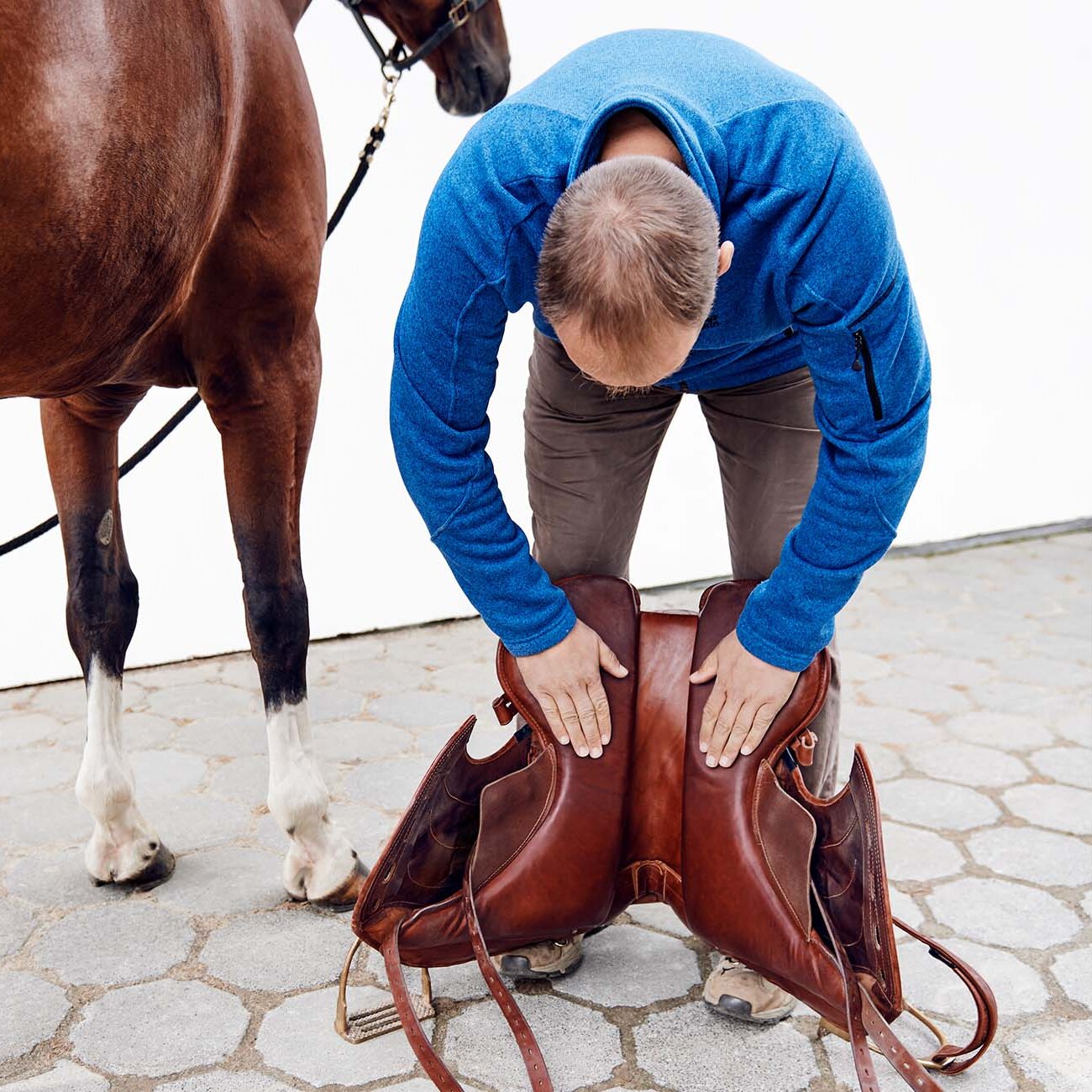
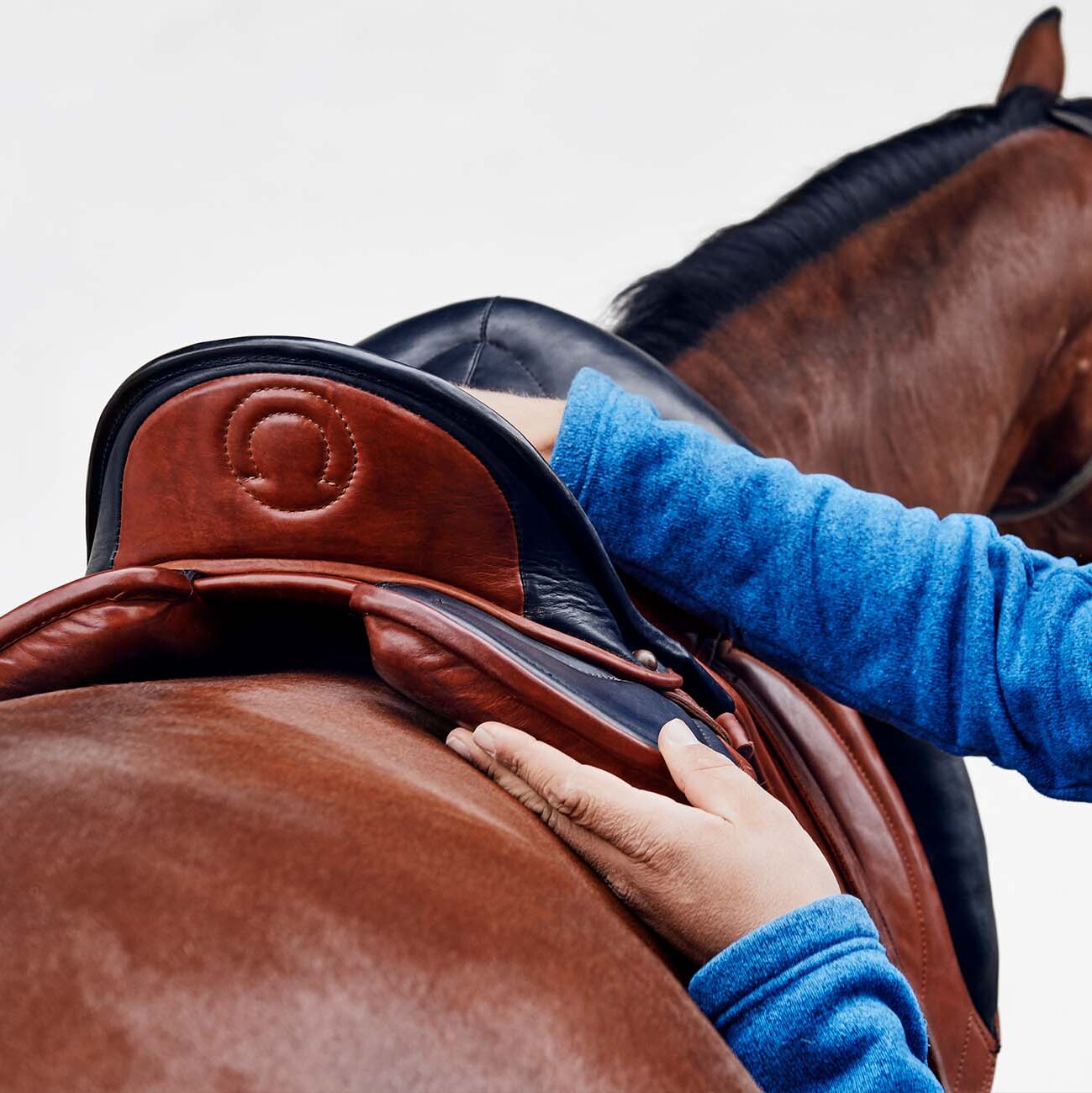
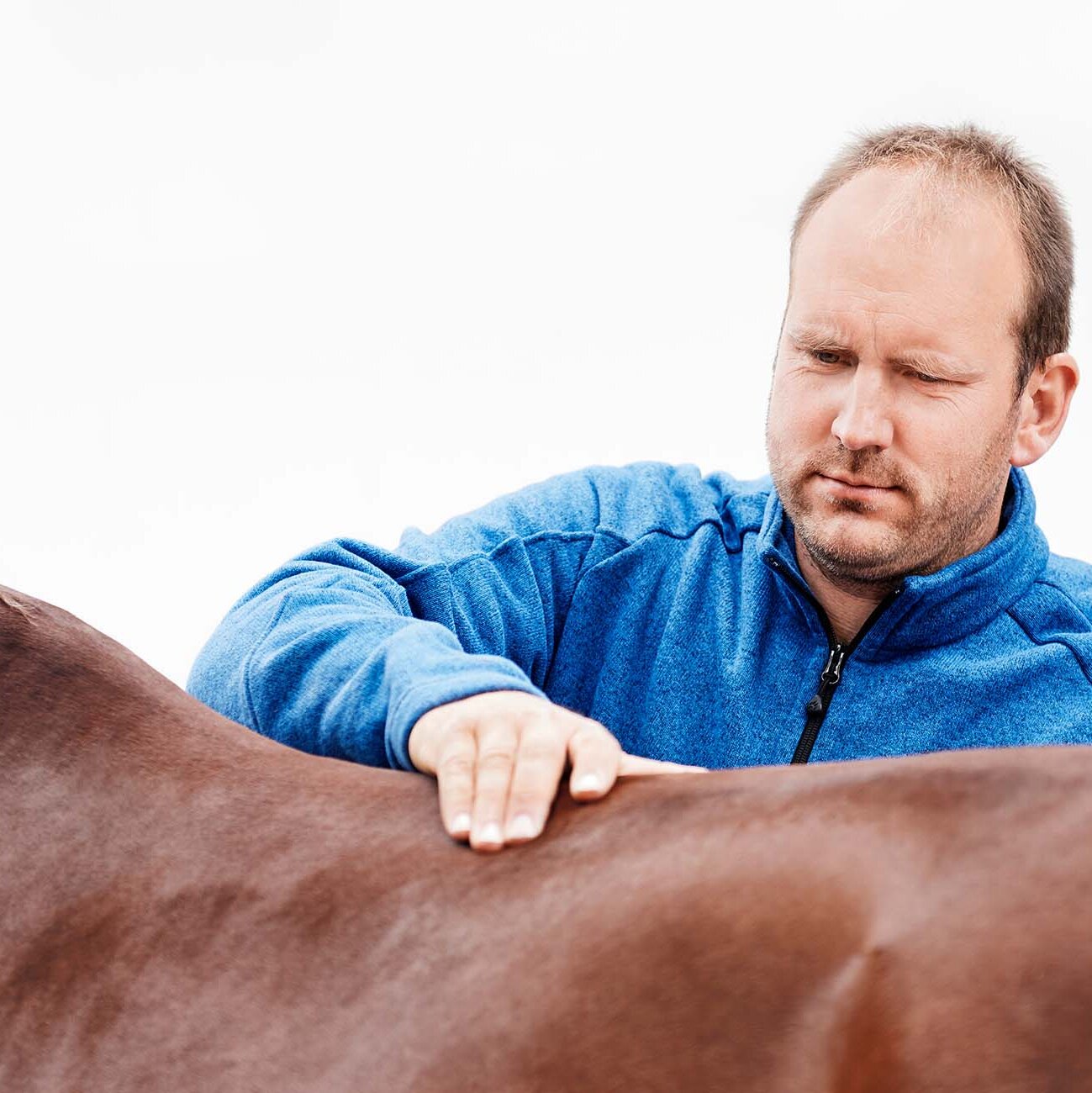
Seat size and contact surface
How does the rider's seat size influence the size of the saddle's contact surface? We at SIGNUM go one step further and take the position that the size of the contact surface should be based on the required seat size of the rider. The horse can only be offered the best possible comfort in terms of even pressure distribution on the back if there is a harmonious relationship between the required seat size and the correspondingly large contact surface.
What seat sizes are there and what seat sizes do I need for a saddle? The seat size describes the length of the seat surface for the rider. This can be measured in inches or centimetres. Common sizes in inches are, for example, 17" or, in comparison, the equivalent seat size 38 in cm. A saddle for a small and light rider with a small seat size is shorter and has a relatively smaller contact surface than a saddle for a large and therefore heavier rider. The larger seat area requires a larger contact surface to ensure the same gentle pressure distribution on the horse's back.
"Short saddle" trend
A short saddle with a large contact surface - is that even possible?
Let's go back to our mathematical formula: Length x width = size of the contact surface. If you reduce the value for the length in this equation, the overall result for the size of the contact surface is also reduced. You should therefore look twice when you see an advertising promise such as: "Short saddle with large contact surface".
Problems due to saddles being too short or too small
Back-friendly and even pressure distribution is particularly jeopardised if the saddle is too short or too small in relation to the required seat size. The risk of unpleasant pressure peaks and uneven pressure distribution is particularly high in a saddle with a short contact surface.
Due to the diversity of breeds, there are now many horses with a short saddle area. At first glance, it seems logical to adjust the length of the saddle to the saddle position of the horse. Unfortunately, this often results in dressage saddles that are too small for the rider, with a deep seat and narrow, short panels or French panels. However, the pressure exerted via the hind pommel leads to pressure peaks in the area of the last rib when used for a longer time period.
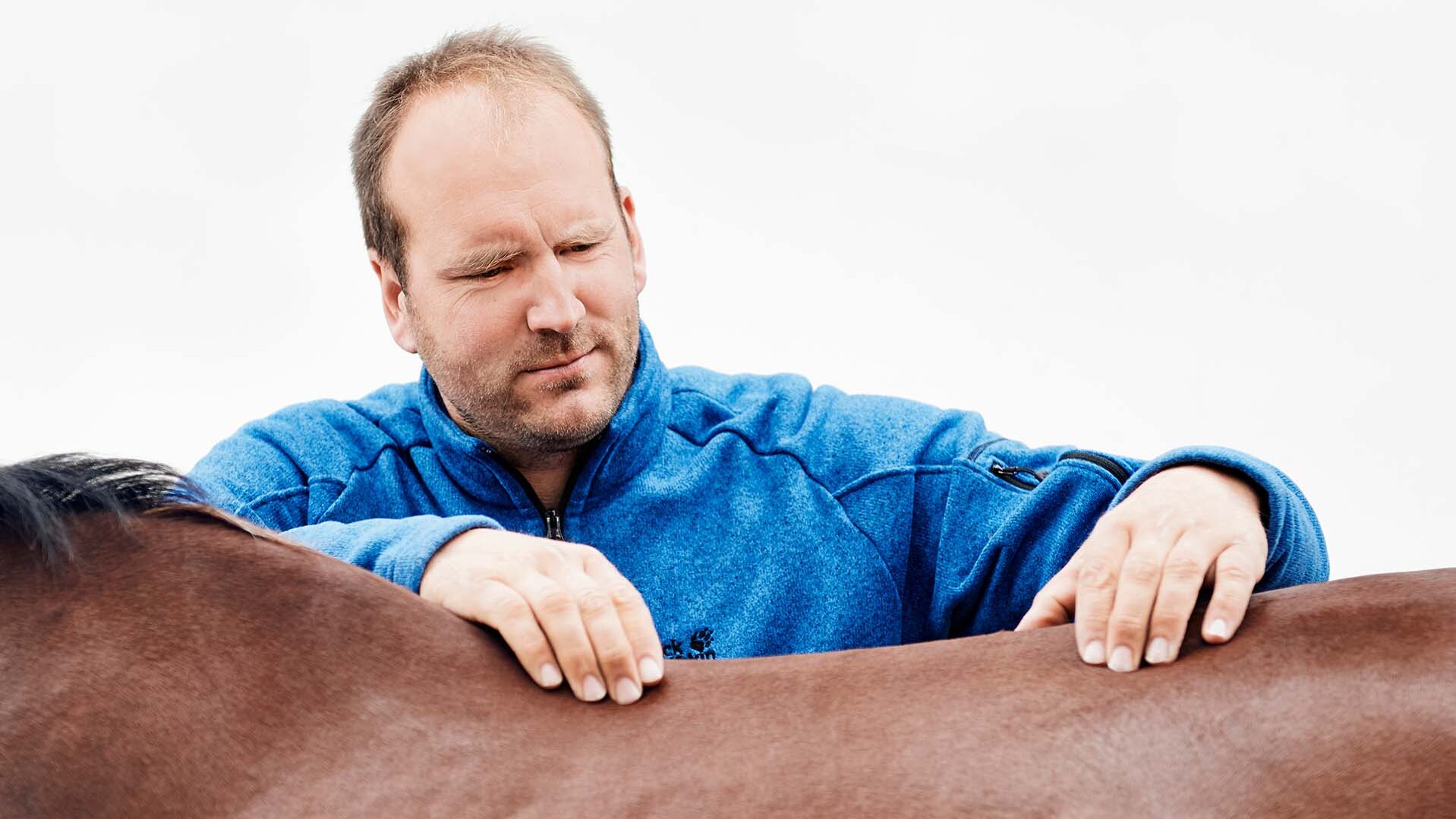
Pressure peaks due to saddles being too short
A saddle that is too small in relation to the rider or the required seat size and therefore usually too short cannot be a sensible solution. In a saddle that is too small or too short, the rider no longer sits in the centre of gravity and has very close contact with the back of the saddle. This increases the lever with which the rider's weight is transferred to the horse's back via the saddle.
This harbours the risk of unpleasant pressure peaks, particularly in the rear area of the saddle panels, and leads to uneven and therefore uncomfortable pressure distribution for the horse. If a horse is ridden for a long time with a saddle that is too short, this will have a negative effect on the horse: it will no longer be able to move freely and its muscles will become tense. Muscle atrophy can develop and, in the worst case, the horse can suffer chronic pain in the back area.
Comfortable solution for the horse
Our experience shows that a saddle with a correspondingly large contact area is the more comfortable solution for the horse, even if the contact area of the saddle extends beyond the ideal saddle area or the last rib. This means that even on short horses, you can ride carefree with a saddle with a large contact area and offer your horse the highest possible level of comfort under the saddle.

